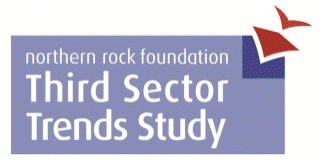 There’s been tremendous speculation over the last few years about the level of demand for loans in the third sector. What is happening on the ground has been clouded, to some extent, by a current preoccupation with ‘social investment’ as opposed to borrowing in general. Government enthusiasm for social investment is reflected in its establishment of Big Society Capital in April 2012, a wholesale lender, which provides capital for financial intermediaries to allocate to TSOs. There are now many financial institutions which serve the third sector marketplace including: Charity Bank, The Keyfund, CAF Venturesome, Social Finance, amongst others.
There’s been tremendous speculation over the last few years about the level of demand for loans in the third sector. What is happening on the ground has been clouded, to some extent, by a current preoccupation with ‘social investment’ as opposed to borrowing in general. Government enthusiasm for social investment is reflected in its establishment of Big Society Capital in April 2012, a wholesale lender, which provides capital for financial intermediaries to allocate to TSOs. There are now many financial institutions which serve the third sector marketplace including: Charity Bank, The Keyfund, CAF Venturesome, Social Finance, amongst others.
Most analysts agree that, to date, there is more money available to lend to TSOs than there is demand to borrow. One of the most probable reasons for this, commentators have concluded, is that TSOs have not yet entered the ‘investment readiness’ zone and need information and support before they do so. Furthermore, it has been shown that amongst those TSOs that are in the investment readiness zone, including those which have been strongly supported by potential investors, the ‘conversion rate’ into loans is, as yet quite low and transaction costs for investors are likely to remain high. Recent survey research from the Northern Rock Foundation Third Sector Trends study casts new light on the level of demand for different types of
Headline findings show that only a small minority of TSOs borrow money. About 14% say that borrowing money is at least of some importance to them as an organisation. By contrast, 87% of TSOs say that grants and 67% of TSOs say that earned income is of at least some importance to them. These headline percentages mask underlying differences.
Almost 95% of the biggest TSOs state that grants are at least of some importance to them. Indeed, fewer than 5% of the three largest categories of organisations state that grants are of no importance. Earned money (by doing contracts or other forms of trading) is of more importance to TSOs the larger they become (although the percentage of the biggest TSOs is slightly lower than for large organisations). Borrowed money is regarded as a resource of at least some importance by fewer than 6% of micro TSOs, but this rises steadily to 39% of the biggest organisations.
How many TSOs have a ‘tangible’ interest in borrowing? The research shows that about 16% of TSOs have a ‘tangible interest’ in borrowing money, and that only 4% have actually borrowed money in the last two years. Having a tangible interest does not, of course, mean that TSOs will actually borrow money in future – only through future waves of the research could it be known how many TSOs translate this tangible interest into action.
When organisations of different sizes are compared is it clear that few micro and small TSOs show interest in the idea of borrowing money (ranging from 7% to 12%), but few have actually done so (fewer than 1% of mi cro and small TSOs). Organisations are progressively more likely to have a tangible interest in borrowing the larger they become: 19% of medium sized organisations have a tangible interest in borrowing rising to around 41% of the biggest TSOs. The two biggest categories of TSOs are the most likely to have borrowed in the last two years: in fact over half of the biggest organisations with a tangible interest in borrowing have actually borrowed money.
Building demand for loans is not just a question of raising awareness about the benefits of loans and getting TSOs into the investment readiness zone. But rather, it will be to ensure that a range of factors converge simultaneously.
(1) That more TSOs make a commitment to take the risks of borrowing because they identify a good business case to do so.
(2) That there is a growing commitment by government and social investors to share the relatively high transaction costs of providing loans to TSOs that are new to this kind of activity. It is also necessary to be patient when waiting for a return on investment and be realistic about the level of return.
(3) That there is a commitment by government (and the public sector bodies it funds) to: let longer-term contracts/social investment bonds to deliver public services which are sufficiently secure and have social objectives which are clearly stated, measurable and achievable.
These are demanding expectations and require a measure of culture change from all parties to recognise the pace at which new values and practices can be assimilated and be acted upon.
A fuller briefing on the findings is available here and the full report is available here.
